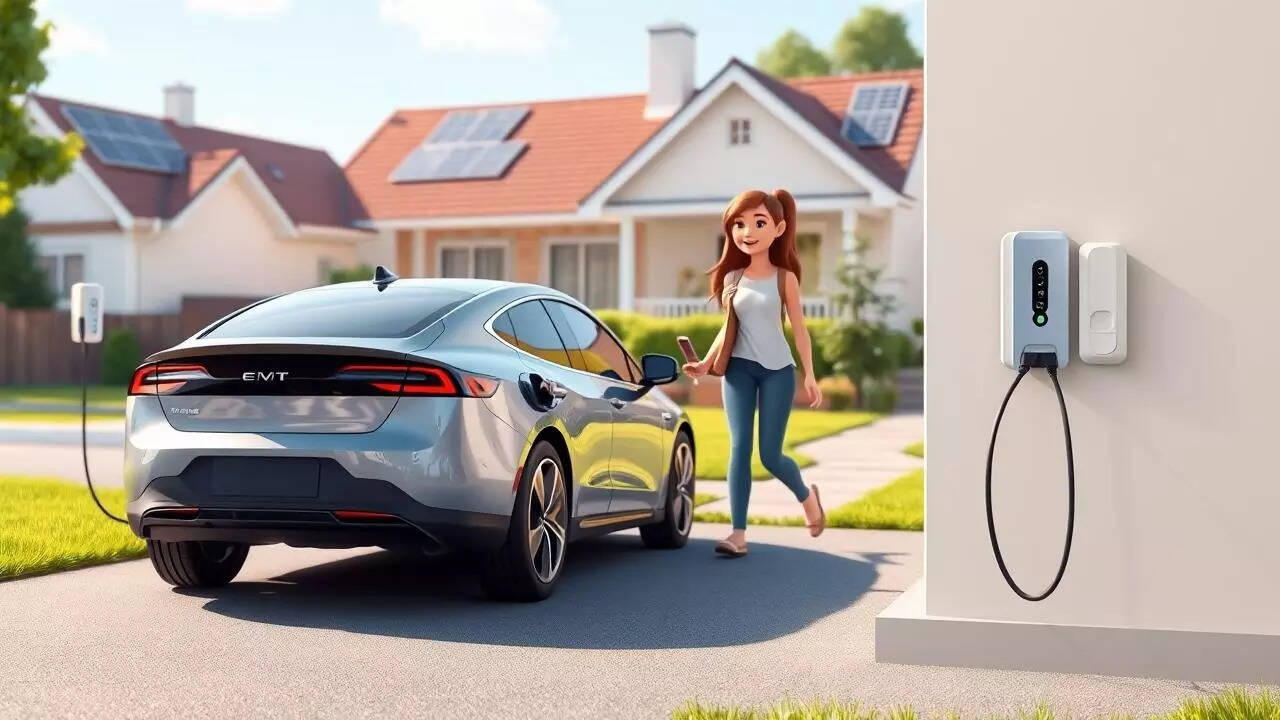Step-By-Step Guide To Installing And Using An Electric Car Charger At Home In India
As electric vehicles (EVs) become increasingly popular in India, home charging is emerging as the most convenient and cost-effective way to power your car. Installing a home charger allows EV owners to charge overnight, avoid long queues at public stations, and maintain their vehicle’s battery efficiently. However, setting up an EV charger at home requires careful planning, consideration of electrical infrastructure, safety compliance, and understanding of costs. This guide outlines what you need to know before installing a home EV charger in India, helping you make informed decisions while ensuring safety and efficiency.
Home EV charging in India offers unmatched convenience and efficiency for electric vehicle owners. Understanding the types of chargers, electrical requirements, compatibility, installation process, and safety considerations is essential for a smooth setup. By planning carefully and opting for professional installation, EV owners can enjoy reliable, fast, and safe home charging while maximising battery life and convenience. With growing EV adoption and supportive policies, home charging is set to become the preferred solution for Indian EV users.

Types of Home EV Chargers
Home EV chargers, also known as Electric Vehicle Supply Equipment (EVSE), typically fall into two categories: Level 1 and Level 2 chargers. Level 1 chargers operate on a standard 230V socket and are suitable for overnight charging, but they are slower and may take 8–12 hours for a full charge. Level 2 chargers use higher voltage and dedicated circuits, allowing faster charging, typically 3–8 hours depending on the car’s battery capacity. Indian EV owners often prefer Level 2 chargers for their efficiency and reliability, especially for vehicles with larger battery packs.Electrical Infrastructure Requirements
Before installing a home EV charger, it is essential to evaluate your existing electrical setup. Most Indian homes require a dedicated circuit to support a Level 2 charger safely. This may involve upgrading your distribution board, wiring, and circuit breakers to handle the additional load. Consulting a licensed electrician ensures compliance with safety standards and prevents overloading, which could otherwise lead to short circuits or fire hazards. Proper grounding and surge protection are also critical to protect both the charger and your vehicle.Choosing the Right Charger and Connector
EV chargers in India come with different connector types and power ratings. Type 2 connectors are commonly used for AC charging, while some vehicles may support fast DC charging with CCS or CHAdeMO connectors. Selecting a charger compatible with your vehicle’s charging port ensures optimal performance. Additionally, consider features such as smart charging, Wi-Fi connectivity, app control, and energy monitoring, which can help manage charging schedules, reduce electricity costs, and track battery health.Installation Process and Professional Support
Installing a home EV charger should always be done by certified professionals. The process involves assessing your home’s electrical capacity, choosing the optimal installation location, securing the charger to a wall or pedestal, and connecting it to the dedicated circuit. Proper installation guarantees safety, compliance with local electrical regulations, and efficient charging. Many Indian EV manufacturers provide certified installation partners, making the process seamless for owners while ensuring warranty coverage.Cost Considerations and Subsidies
The cost of home EV chargers in India varies based on power rating, brand, and features. Level 1 chargers are more affordable but slower, while Level 2 chargers involve higher upfront costs, including installation charges. Some states and central government schemes provide subsidies or incentives for setting up EV charging infrastructure at home, reducing the financial burden on owners. Factoring in long-term savings on fuel and convenience, investing in a home charger is often cost-effective.Safety and Maintenance Tips
Ensuring safety during home EV charging is crucial. Always follow manufacturer instructions, avoid using extension cords, and keep the charger away from water or combustible materials. Regular inspection of cables, connectors, and the charger unit helps prevent damage and ensures reliable performance. Additionally, maintaining proper ventilation around the charger reduces overheating risks, while using surge protectors safeguards against voltage fluctuations common in certain regions of India.Home EV charging in India offers unmatched convenience and efficiency for electric vehicle owners. Understanding the types of chargers, electrical requirements, compatibility, installation process, and safety considerations is essential for a smooth setup. By planning carefully and opting for professional installation, EV owners can enjoy reliable, fast, and safe home charging while maximising battery life and convenience. With growing EV adoption and supportive policies, home charging is set to become the preferred solution for Indian EV users.
Next Story